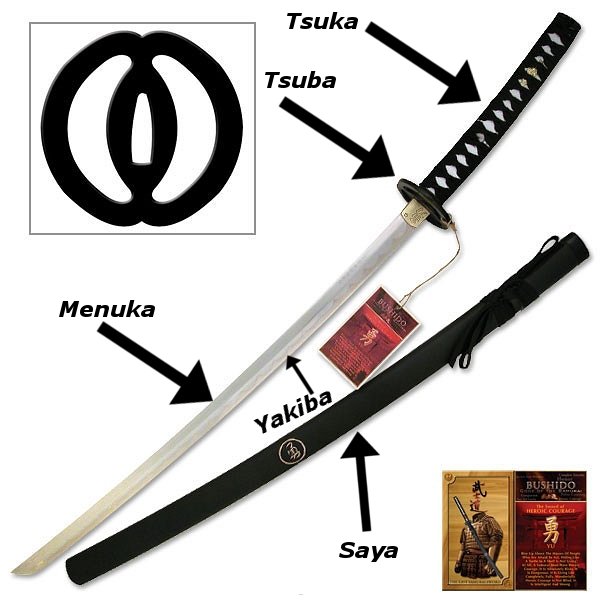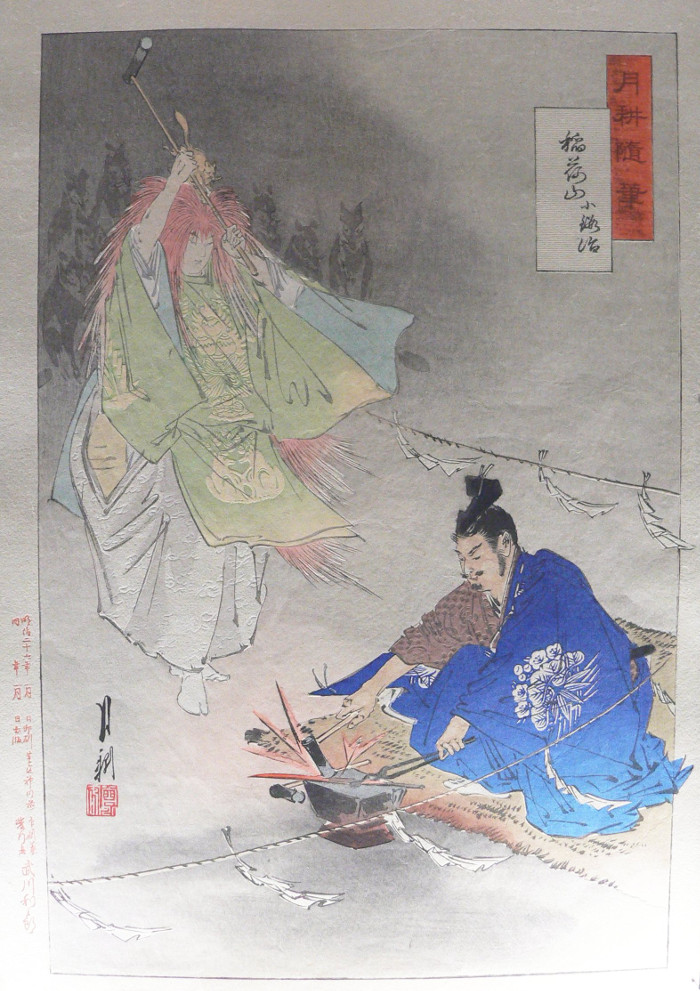The sword is something more for a samurai than just a weapon. It is his honour, soul, companion.
Exploring a given culture and its history, you should also learn as much as possible about its most characteristic weapons. In the past, apart from serving a defensive function, it carried a ritual and ceremonial meaning. It was commonly gifted as a symbol of friendship or appreciation of the heroic deeds. A weapon could also be a means of payment, as well as a valuable merchant commodity. It had an honourable position in many aspects of life, both individual and social.

Pic. 1 The samurai in full armor with a katana in combat position.
In Japan, such material and symbolic value was characteristic for the samurai sword called katana. Its origins date back to the seventh century. The first swords of simple shape were smelted from a single piece of metal and were not endowed with such outstanding ornamentation as in the later periods. It was not until the fourteenth century that the katana sword started to resemble our current idea of this weapon. However, the systematization of production did not begin before the time between the seventeenth and the nineteenth century, when the rules of carrying and usage of weapons were strictly defined by law. The katana sword was attached with a belt to the usual attire, not the armor (in this case, the so-called tachi sword was preferred). An extremely complex process for its preparation was a closely guarded secret. Legend has it that an assistant who tried to steal the recipe, was immediately punished by a blacksmith with cutting off his hand. It was because the assistant dipped it in a vat, trying to identify the cooling temperature of the produced sword.
The katana blade was created by multiple layers of steel and iron, which made it extremely durable. To produce it, a special steel made from the iron particles that are washed away by rivers in the mountains is still in use nowadays. The steel is melted in a professional oven for 2-3 days using charcoal, which allows it to obtain its unique parameters. Firstly, a long rod was formed and then it was cut in two pieces. The halves had to be put on each other, then a rod of the created material was shaped again and heated in the furnace many times. A multi-layered katana was obtained thanks to this repetitive procedure. This sword consists of the following main parts: yakiba (hardened blade fragment), mune (back, blunt part of it), tsuka (handle) and tsuba (guard). Additionally, various decorations (menuki) may occur. The handle was traditionally wrapped with specially treated shark leather. Nowadays, silk is usually used for this purpose.

Pic. 2. Katana - listing the most important parts
A samurai sword could literally cut a person in two, what sometimes happened to be checked on convicts, but more often on corpses or bushes. The blade was so resilient that it allowed for effective punches blockage. Therefore, samurai used katana not only to attack but also to defend themselves, which is the reason why they never used any shields in clashes. The blade made it possible to cut an enemy's flesh up to the bone. Such a unique combination was created thanks to the Japanese armourers' immense experience, supported by experiments carried out over the centuries.
Katana happens to be called the best melee weapon in the world, being put over even the greatest masterpieces of Western art armourers. This weapon constituted a spirit for a samurai, therefore it was handed down from generation to generation. The very process of manufacturing was once very spiritual. Before starting his work, an armourer had to bathe thoroughly, put on a white dress and say prayers aloud during all the time of the manual handling of a weapon. The samurai sword was treated almost like a living deity. The most eminent copies were even given divine names ('kami' in Japanese). Until now, the katana has been widely recognized and respected and so have been the armourers who are producing them nowadays. In Japan, they are even approached with a kind of mysticism.

Pic. 3. Picture showing master Munechika Sanjō, aided by the spirit of foxes, shows the forging of a sword Ko-Gitsune Maru, woodcut Gekkō Ogata
The Global Replicas shop offers only the finest, precisely copied melee weapon's replica. Thus, our replica of a samurai sword is the perfect representation of the traditional Japanese weapons that will satisfy even the most demanding enthusiasts and discerning collectors for sure. We prepare them with passion and with thorough consideration of the historical data, so that they could capture the artistry of the original as much as possible and allow the owner to feel the atmosphere of past ages. A samurai sword replica is something more than just a refined decoration, it is also an artifact with the soul of the past enchanted in it.